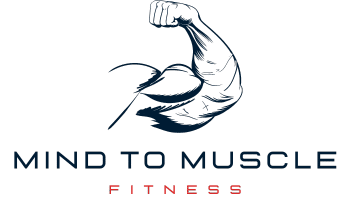
Maximize Gains with Isometric Bicep Curls
Recent research reveals that incorporating isometric exercises into your fitness routine can boost muscle endurance by an impressive 66%. Even more intriguing is their impact on bicep strength and muscle activation. Today, we’ll explore how isometric bicep curl can transform your arm workouts and elevate your results.
Isometric bicep curls provide a unique approach to targeting your biceps without any dynamic movement. By holding a fixed position, you engage your muscle fibres more deeply, leading to enhanced strength and endurance. This technique is a game-changer for those looking to maximize their bicep training with efficiency and precision.
Through isometric strength training, you not only build bicep strength but also improve muscle control. These benefits make isometric bicep curls essential for anyone serious about refining their fitness routine. Please stick with us as we dive into the world of isometric holds and uncover their profound impact on your workouts.
Understanding Isometric Exercise Basics

Strength training techniques known as isometrics include contractions of the muscle without any change in length. You maintain a stationary position as opposed to raising or lowering weights. Isometric contractions follow, which raise muscle tension without causing the joints to move.
What Are Isometric Exercises?
Isometric exercises involve holding a position for a set duration, creating muscle tension without any movement. Unlike dynamic exercises that involve changing muscle length through movement, isometric exercises focus on maintaining a static position to build strength. Common examples of isometric exercises include planks, wall sits, and static holds in various positions. These exercises are simple to perform yet highly effective for increasing muscle strength and endurance.
Benefits of Isometric Training
Among the many advantages of isometric training are notable increases in strength and stability. The ability of muscle fibers to produce force can be increased by maintaining a position under strain. Using the core and stabilizing muscles also helps to improve stability.
- Strength Gains: Isometric exercises help build and maintain muscle strength effectively.
- Stability Improvement: These exercises target stabilizer muscles, enhancing balance and control.
- Injury Prevention: Regular practice can fortify joints, reducing the risk of injuries.
How Isometric Exercises Work
Muscle fibers that are used in isometric exercises contract and produce force while staying the same length. Static holds provide a great deal of muscle tension, which makes regulated engagement possible. You can optimize the advantages and avoid damage by paying attention to appropriate form and breathing.
The Science Behind Isometric Bicep Curls

Isometric bicep curls are an effective method for stimulating muscle hypertrophy by holding a muscle contraction for an extended period. This technique increases motor unit recruitment, which enhances muscle engagement and development, allowing you to push past your usual limits.
When performing isometric bicep curls, various muscle fiber types are activated, including both slow-twitch and fast-twitch fibers. This comprehensive activation ensures a well-rounded approach to muscle growth. By targeting these different muscle fibers, isometric exercises contribute significantly to overall muscle development.
Scientific research highlights that isometric training can improve peak force production. Holding a muscle at its maximum contraction heightens tension, which boosts strength and power. This increased peak force production ensures you maximize the effectiveness of each workout.
Furthermore, isometric bicep curls improve neuromuscular efficiency. This means that the communication between your brain and muscles becomes more effective, leading to better control and muscle activation. Enhanced neuromuscular efficiency results in more productive workouts and faster progress.
Here is a quick overview of how different factors contribute to muscle growth and efficiency:
| Factor | Description |
|---|---|
| Muscle Hypertrophy | Growth of muscle cells due to sustained contraction. |
| Motor Unit Recruitment | Increased engagement of muscle fibers for enhanced performance. |
| Muscle Fiber Types | Activation of both slow-twitch and fast-twitch fibers. |
| Peak Force Production | Maximal strength produced during contraction. |
| Neuromuscular Efficiency | Improved coordination between nerves and muscles. |
Step-by-Step Guide to Performing Isometric Bicep Curls
Gaining proficiency in isometric bicep curls can greatly increase your total gains and muscle engagement. To achieve optimal exercise technique, adhere to this comprehensive training program.
Proper Positioning
Start by placing your feet shoulder-width apart and standing straight. With your hands facing up, hold a dumbbell in each hand. To get the most out of bicep isolation, keep your elbows firmly tucked against your sides. The stage is prepared for efficient muscle activation with this posture.
Holding the Contraction
Raise the weights to a midway position; stop when your elbows are 90 degrees from the body. Hold this posture while concentrating on keeping your biceps contracted. Make sure your upper arms stay still the entire time. This angle increases muscle activation by fully engaging the biceps.
Maintaining Breath Control
It’s important to use good breathing methods during this activity. Inhale deeply through your nose, then hold the contraction for a moment. Exhale steadily through your mouth while holding the position. Breathing consistently improves muscle function and helps avoid overdoing it.
Here is a quick summary of the essential steps:
| Step | Description |
|---|---|
| 1. Position | Stand with feet shoulder-width apart and hold dumbbells. |
| 2. Lift and Hold | Raise weights to a 90-degree angle and maintain. |
| 3. Breathe | Inhale through the nose and exhale steadily through the mouth. |
Common Mistakes to Avoid with Isometric Bicep Curls

Although they have benefits, isometric bicep curls might have drawbacks if not performed properly. Let’s examine the typical blunders and how to steer clear of them for safe exercise and injury prevention.
Overexertion Risks
Overtraining results from the common mistake of pushing too hard. It’s critical to pay attention to body signals and identify symptoms of muscle strain. Being overly active can lead to damage to your ligaments, so be aware of your limits to prevent overtraining. Steady advancement requires steady, modest effort.
Incorrect Form
When doing isometric bicep curls, proper form is essential. Common mistakes like misaligning the elbow or hand can reduce effectiveness and raise the risk of injury. Make sure you always keep your posture controlled and that the muscles you are targeting are being worked. This focus on technique promotes workout safety by preventing muscular tension.
We frequently undervalue the importance of good exercise form, yet giving it top priority will help you reach your fitness objectives effectively and securely. Maintaining proper form not only minimizes the risk of injury but also ensures that you’re engaging the right muscle groups for optimal performance. Incorporating variety into your routine can further enhance your progress, as you can maximize gains with exercise rotation by targeting muscles from different angles and preventing plateaus. By prioritizing form and embracing diverse exercises, you’ll create a balanced and sustainable approach to reaching your fitness goals.
Integrating Isometric Bicep Curls into Your Routine
Integration of your workouts is essential if you want to improve your fitness routine. Traditional strength training regimens can be supplemented with isometric bicep curls. You can add exercise variety that promotes muscle growth from various angles by incorporating these exercises.
Complementing Traditional Workouts
Try combining dynamic exercises like barbell curls with isometric bicep curls to increase the efficacy of your training. This combination maximizes muscle engagement. For isometric exercises, use progressive loading by progressively lengthening the hold time.
Frequency and Repetition
The frequency of training must be balanced. Start with two to three sessions a week for novices. Every session, spend 10 to 15 seconds holding the bicep curl posture. As your endurance increases, progressively increase the time. Remember how important it is for your muscles to heal. To encourage muscle growth and regeneration, make sure you get enough sleep in between workouts.
Tracking Progress and Measuring Success
Keeping a workout log is one of the most effective ways to track your fitness journey and see tangible improvements in bicep strength and endurance over time. By documenting each workout, you gain valuable insights into what strategies are working best for your goals.
Setting realistic and measurable goals is crucial for maintaining motivation. Clear fitness milestones create a roadmap to success, allowing you to achieve small, incremental goals and celebrate each personal record. This approach not only helps keep your momentum going but also ensures you stay focused on your progress.
Utilizing fitness tracking apps or journals simplifies the process of monitoring your workouts. These tools help you keep track of repetitions, weights, and the duration of your isometric bicep curls. By recording these metrics, you can observe your improvements and make necessary adjustments to your routine.
Moreover, recording your workouts helps you identify and address strength plateaus. If you notice a stall in progress, you can tweak your exercises to overcome the plateau. This proactive strategy ensures continuous improvement and keeps your training both challenging and rewarding.
FAQ
What are isometric bicep curls?
Strength training exercises like isometric bicep curls are designed to increase muscle strength and endurance. Isometric bicep curl target the biceps by maintaining muscle tension without changing the length of the muscle, in contrast to typical bicep curls that include dynamic movement.
What are the benefits of isometric bicep curls?
Increased muscular activation, better bicep strength, and increased muscle endurance are the advantages of isometric bicep curl. For those who want to get more out of their arm workouts and improve their overall bicep training regimen, this exercise is especially helpful.
How do isometric bicep curls work?
Isometric bicep curls function by keeping the biceps engaged and under continual stress by maintaining a static grip. Overall muscular development is aided by the strength, hypertrophy, and enhanced motor unit recruitment that result from this muscle tension.
What are isometric exercises?
Strength training techniques known as isometrics include contractions of the muscle at the same duration. Static holds are used in these workouts to increase muscular tension, stability, joint health, and injury avoidance.
Why are isometric exercises beneficial?
Higher strength development, better stability, higher muscular tension, and better joint health are just a few advantages of isometric exercise. Additionally, they lower the chance of injury by enhancing muscle strength and improving motor unit activation.
Can you explain how isometric exercises work?
Muscle fibers contract and produce force while maintaining a static position during isometric exercises. This procedure increases muscle tension, improves strength, and encourages the development of new muscles and enhanced stability.
How do I perform isometric bicep curls correctly?
To perform isometric bicep curls correctly, begin with proper positioning and alignment to isolate the biceps. Hold the contraction at an effective angle, ensuring maximum muscle engagement, and focus on maintaining consistent breath control during the exercise.
What mistakes should I avoid with isometric bicep curl?
Avoid common mistakes like improper form, which can decrease workout efficacy and raise the chance of injury, and overexertion dangers, which include muscle strains or ligament damage. Always be mindful of your technique and pay attention to your body.
How can I integrate isometric bicep curls into my routine?
Complete your regimen with isometric bicep curls in addition to standard arm workouts and exercises. Depending on your level of fitness, modify the frequency and quantity of repetitions. Also, make sure you take enough breaks to allow for muscle repair and progressive overload.
How do I track my progress with isometric bicep curl?
Maintain a workout journal to track your progress and see how your bicep strength and endurance have improved. To keep yourself motivated and acknowledge your accomplishments, set attainable, quantifiable goals and mark significant personal records and strength milestones.



